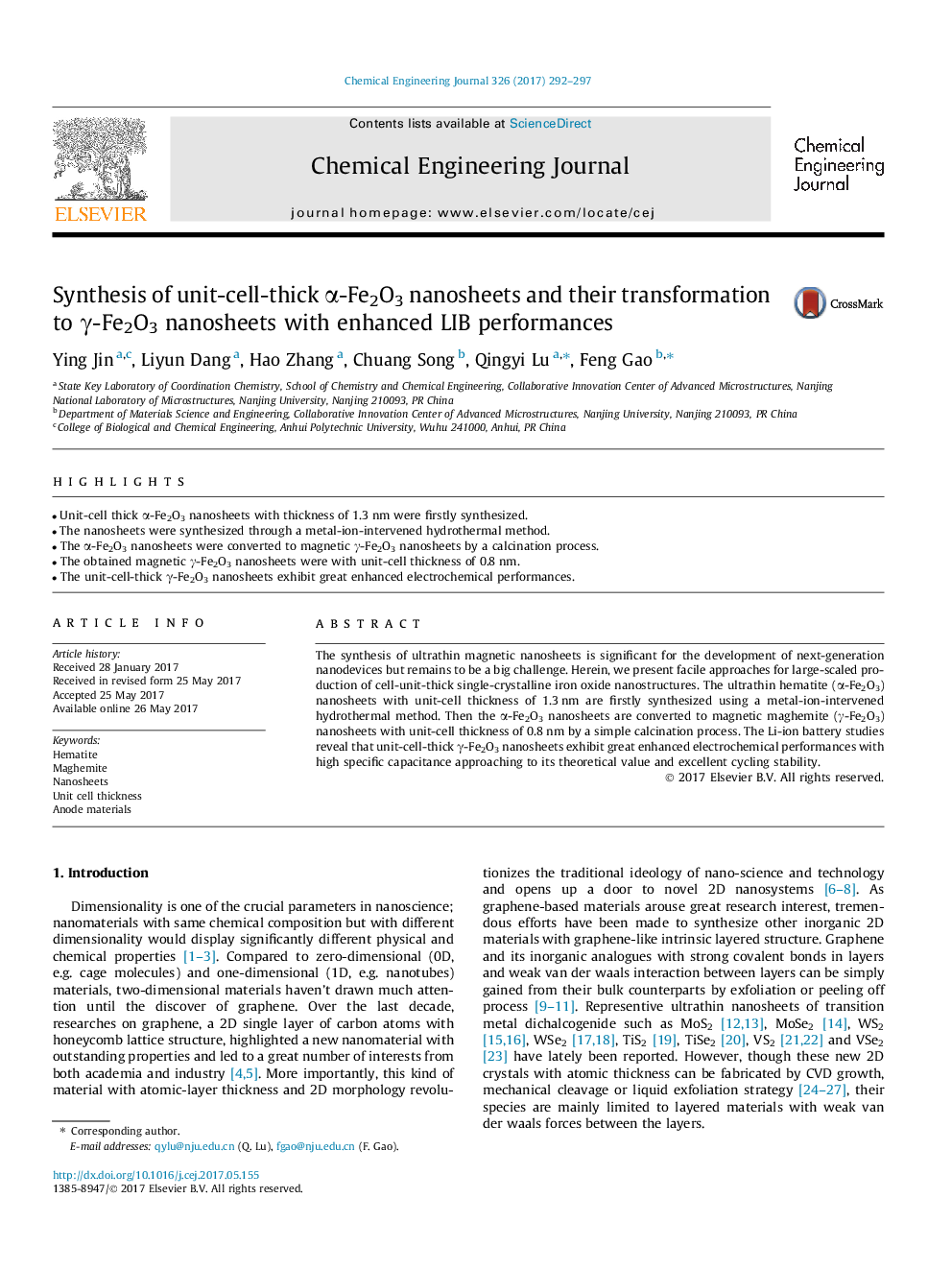| Article ID | Journal | Published Year | Pages | File Type |
|---|---|---|---|---|
| 6465615 | Chemical Engineering Journal | 2017 | 6 Pages |
â¢Unit-cell thick α-Fe2O3 nanosheets with thickness of 1.3 nm were firstly synthesized.â¢The nanosheets were synthesized through a metal-ion-intervened hydrothermal method.â¢The α-Fe2O3 nanosheets were converted to magnetic γ-Fe2O3 nanosheets by a calcination process.â¢The obtained magnetic γ-Fe2O3 nanosheets were with unit-cell thickness of 0.8 nm.â¢The unit-cell-thick γ-Fe2O3 nanosheets exhibit great enhanced electrochemical performances.
The synthesis of ultrathin magnetic nanosheets is significant for the development of next-generation nanodevices but remains to be a big challenge. Herein, we present facile approaches for large-scaled production of cell-unit-thick single-crystalline iron oxide nanostructures. The ultrathin hematite (α-Fe2O3) nanosheets with unit-cell thickness of 1.3 nm are firstly synthesized using a metal-ion-intervened hydrothermal method. Then the α-Fe2O3 nanosheets are converted to magnetic maghemite (γ-Fe2O3) nanosheets with unit-cell thickness of 0.8 nm by a simple calcination process. The Li-ion battery studies reveal that unit-cell-thick γ-Fe2O3 nanosheets exhibit great enhanced electrochemical performances with high specific capacitance approaching to its theoretical value and excellent cycling stability.
